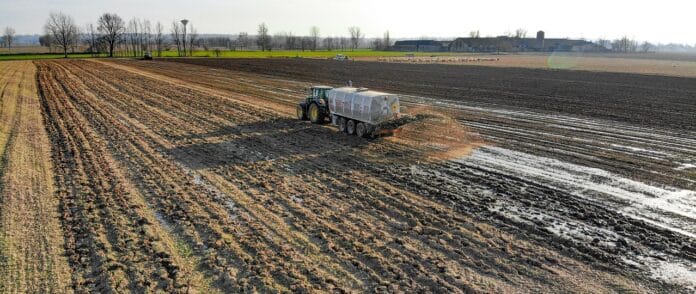Fertilizers containing nitrogen are used to increase food production, but their emissions may pollute the environment. For maximizing resource use, raising agricultural yields, and lowering environmental risks, continuous and real-time monitoring of soil properties, such as soil temperature and fertilizer emission, is essential. A multi-parameter sensor is necessary for smart or precision agriculture to track NOX gas emissions and soil temperature for the best fertilization.
James L. Henderson, Jr. Memorial Associate Professor of Engineering Science and Mechanics at Penn State Huanyu “Larry” Cheng led the development of a multi-parameter sensor that successfully separates temperature and nitrogen signals to allow accurate measurement of each.
Cheng said, “For efficient fertilization, there is a need for continuous and real-time monitoring of soil conditions, specifically nitrogen utilization and soil temperature. This is essential for evaluating crop health, reducing environmental pollution, and promoting sustainable and precision agriculture.”
The study aims to employ the appropriate quantity for the best crop yield. The crop’s production may be lower than it may be if more nitrogen is used. When fertilizer is applied excessively, it is wasted, plants can burn, and toxic nitrogen fumes are released into the environment. Farmers can reach the ideal levels of fertilizer for the growth of plants with the help of accurate nitrogen level detection.
Co-author Li Yang, a professor in the School of Artificial Intelligence at China’s Hebei University of Technology, said, “Plant growth is also impacted by temperature, which influences the physical, chemical, and microbiological processes in soil. Continuous monitoring enables farmers to develop strategies and interventions when temperatures are too hot or too cold for their crops.”
According to Cheng, Sensing mechanisms that can obtain nitrogen gas and temperature measurements independent of each other are rarely reported. Both gases and temperature can cause variations in the sensor’s resistance reading, making it difficult to distinguish between them.
Cheng’s team created a high-performance sensor that can detect nitrogen loss independently of soil temperature. The sensor is made of vanadium oxide-doped, laser-induced graphene foam, and it has been discovered that doping metal complexes in graphene improve gas adsorption and detection sensitivity.
Because a soft membrane protects the sensor and prevents nitrogen gas permeation, the sensor solely reacts to changes in temperature. The sensor can also be used without encapsulation and at a higher temperature.
This allows for accurate measurement of the nitrogen gas by excluding the effects of relative humidity and soil temperature. Temperature and nitrogen gas can be entirely, and interference-free decoupled using the enclosed and unencapsulated sensors.
The researcher said decoupling temperature changes and nitrogen gas emissions could be used to create and implement multimodal devices with decoupled sensing mechanisms for precision agriculture in all weather conditions.
Cheng said, “The capability to simultaneously detect ultra-low nitrogen oxide concentrations and small temperature changes paves the way for the development of future multimodal electronic devices with decoupled sensing mechanisms for precision agriculture, health monitoring, and other applications.”
Cheng’s research was funded by the National Institutes of Health, the National Science Foundation, Penn State, and the Chinese National Natural Science Foundation.
Journal Reference:
- Li Yang.Chuizhou Meng, et al.Vanadium Oxide-Doped Laser-Induced Graphene Multi-Parameter Sensor to Decouple Soil Nitrogen Loss and Temperature. Advance Material. DOI: 10.1002/adma.202210322
